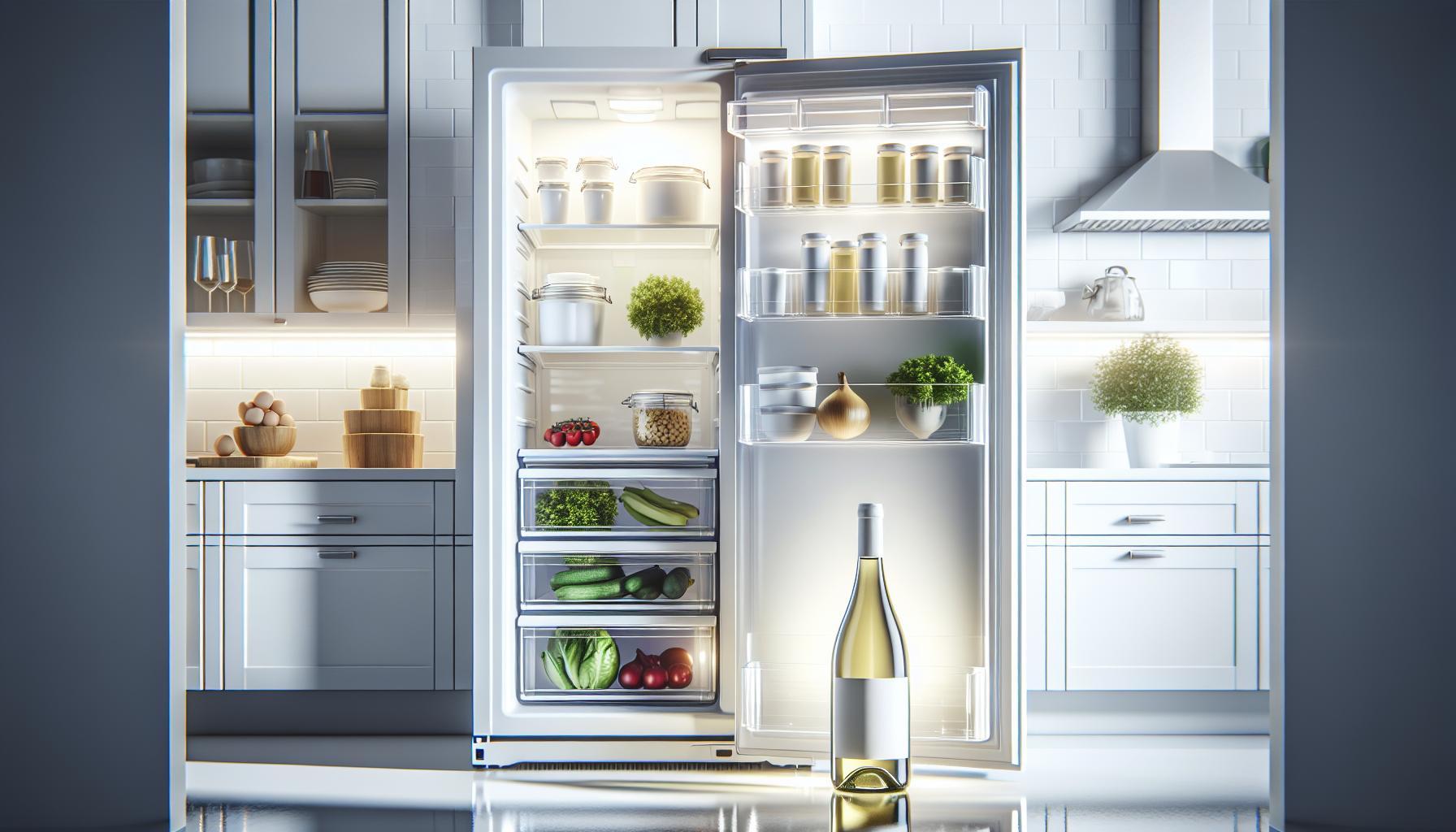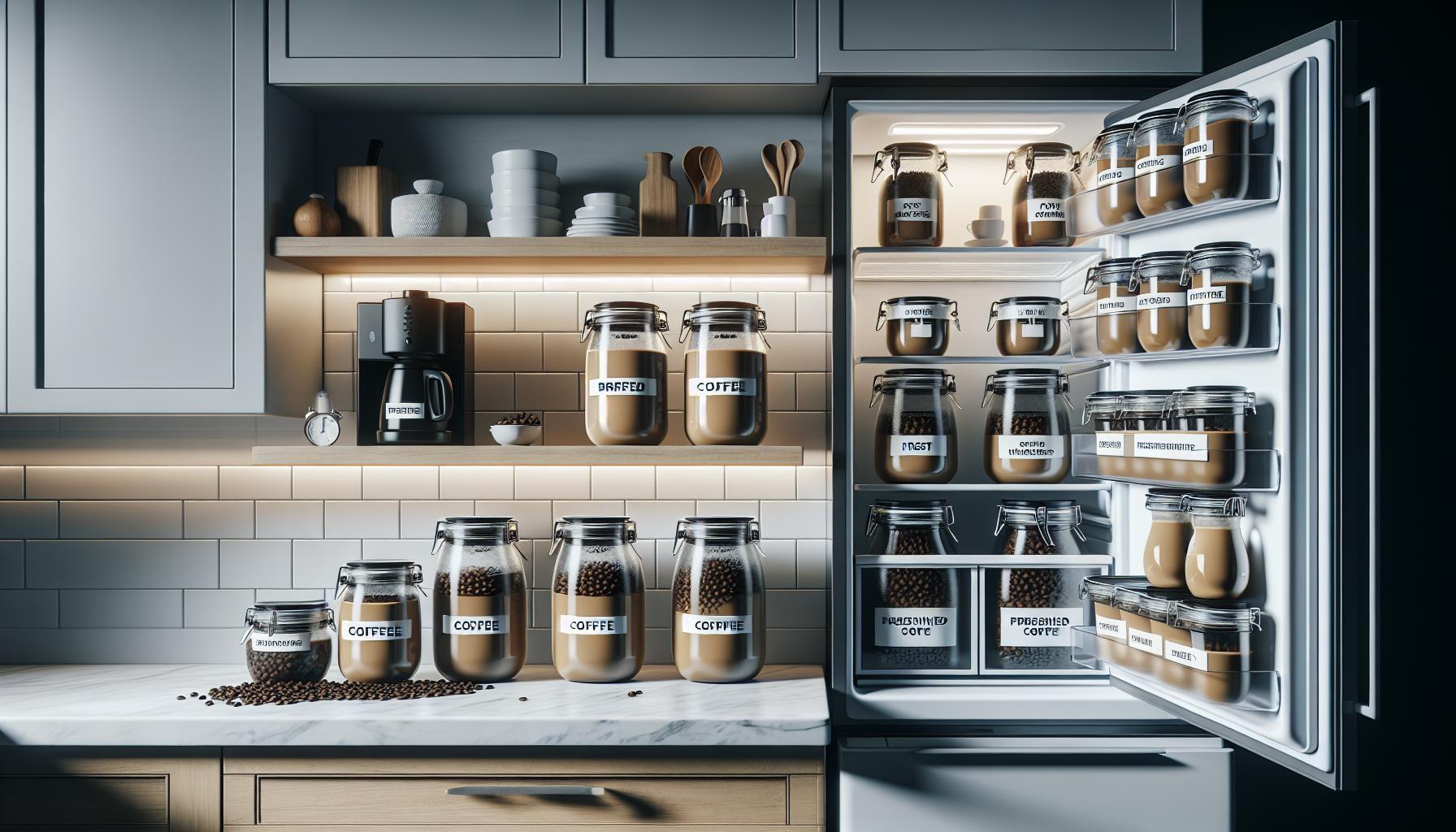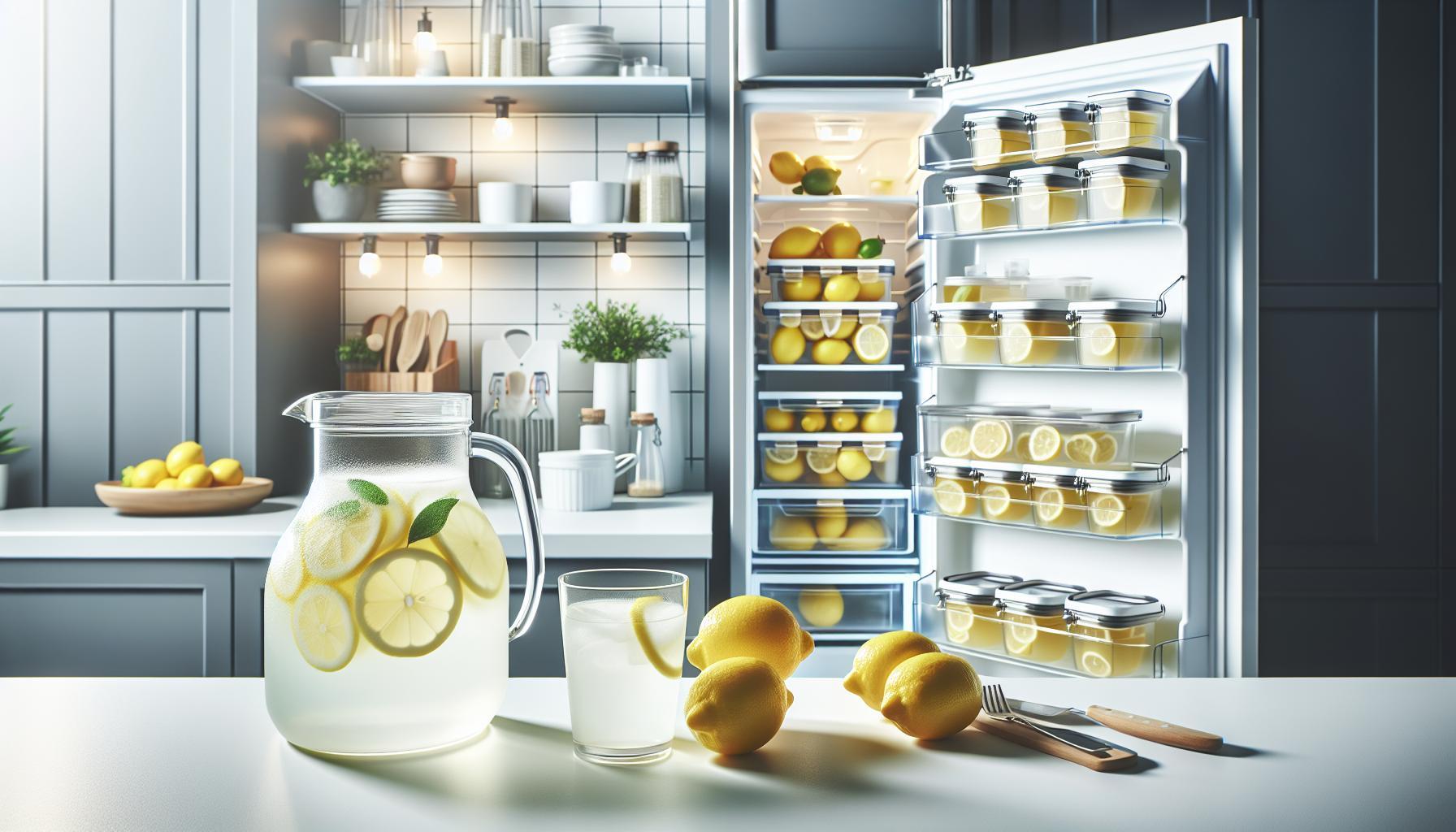Did you know that an opened bottle of white wine can only last for about 2-3 days in the fridge before it starts to lose its distinctive flavor? This is crucial information for wine enthusiasts looking to savor every last drop of their favorite varieties. Understanding how to properly store white wine not only helps maintain its freshness but also enhances your overall drinking experience.
Whether you’re hosting a gathering or simply unwinding after a long day, ensuring your white wine stays flavorful and safe is key. With the right guidelines on storage temperature and duration, you can enjoy crisp, aromatic sips without the worry of spoilage. As we dive deeper into the best practices for keeping your white wine fresh, you’ll discover practical tips that make all the difference. Explore how to maximize the lifespan of your wine and elevate your enjoyment with every glass.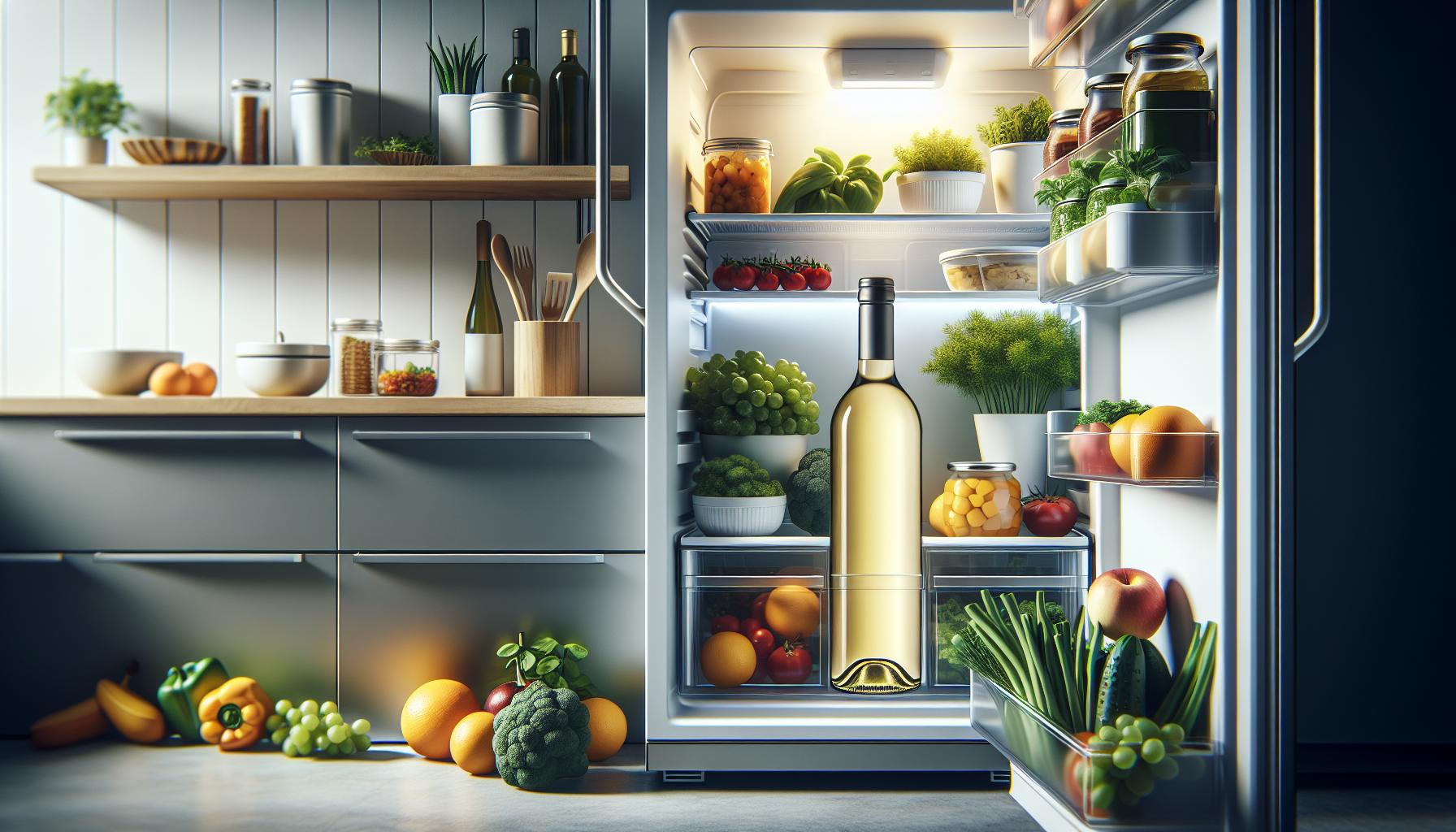
How Long Can White Wine Be Stored in the Fridge?
Storing white wine in the refrigerator can significantly extend its shelf life, especially once the bottle has been opened. Generally, opened white wine can last between two to three days in the fridge, provided it’s sealed properly with a wine stopper or cork. This is crucial for preserving the wine’s flavor and preventing oxidation, which can quickly diminish the wine’s quality.
For unopened bottles, the refrigerator can serve as a temporary storage solution. However, for optimal long-term storage, white wine should ideally be kept at a consistent temperature range of 45 to 65 °F (7 to 18 °C). While refrigerating your white wine is effective for keeping it cool, ideally, it should be stored in a more controlled environment, like a dedicated wine fridge, that maintains humidity and temperature consistent with wine preservation principles.
If you enjoy white wine regularly and find yourself with leftovers, correctly sealing and placing the open bottle back into the fridge is the best approach. Just remember to consume it within a few days to enjoy its optimal taste. Consider investing in a vacuum pump if you anticipate having open bottles more frequently; this can help to further reduce oxidation by removing air from the bottle, allowing your wine to last a bit longer.
Ideal White Wine Storage Temperatures
Maintaining the right storage temperature is crucial for preserving the quality and flavor of white wine. The ideal range for storing white wine is typically between 45 to 65 °F (7 to 18 °C). Sticking within this temperature range helps maintain the wine’s delicate nuances and prevents premature aging. Most everyday refrigeration falls on the cooler side of this spectrum, which is why the refrigerator can be a practical solution for both opened and unopened bottles, as long as the temperature doesn’t dip too low.
For long-term storage, utilizing a dedicated wine fridge is highly beneficial. These appliances are designed to provide a consistent environment that mimics the climate of a wine cellar, offering both humidity control and stable temperatures. A temperature setting around 11 to 15 °C (52 to 59 °F) is recommended for optimal aging, allowing the cork to remain moist and effectively sealed against oxidation while preserving the wine’s intended flavor profile [[1]].
When considering where to store your wine, it’s important to avoid places with significant temperature fluctuations, like near ovens or windows, which can disrupt the wine’s aging process. A consistent, moderate temperature is key. For everyday enjoyment, if you plan to drink white wine within a few days, the refrigerator is not only convenient but also effective for slowing oxidation in opened bottles, particularly when using a proper wine stopper. Just remember, opened white wines will ideally be consumed within two to three days for the best experience [[2]].
Understanding the Shelf Life of Opened White Wine
Opened white wine has a relatively short shelf life, significantly influenced by exposure to air. Even when properly stored in a refrigerator, an opened bottle of white wine typically maintains its best quality for about two to three days. After this period, the wine begins to oxidize, which can alter its taste, aroma, and overall quality.
To maximize the freshness of your opened wine, consider the following storage tactics:
- Seal it Up: Use a wine stopper, vacuum pump, or cork to minimize air exposure. This greatly helps in preserving the wine’s flavor by limiting oxidation.
- Temperature Matters: Keeping the wine in the refrigerator slows down the oxidation process, helping extend its freshness compared to keeping it at room temperature.
- Check the Color and Smell: Signs of a wine going bad can include a browning color and off-putting aromas. If it smells vinegary or has a sour taste, it’s best to discard it.
For white wines that are fuller-bodied or have higher acidity, the taste may remain pleasant for a day or two longer than lighter varieties. Sweet white wines, due to their sugar content, can also last a bit longer as sugar acts as a preservative. However, for the optimal drinking experience, it’s advisable to enjoy opened bottles promptly.
While there’s some leeway for aesthetic quality, keeping the bottle sealed and stored appropriately in the fridge is crucial to enjoying your wine at its best. If you find yourself with leftover wine frequently, consider using smaller bottles to minimize air exposure to the remaining wine, or plan to share your bottle with friends to reduce waste.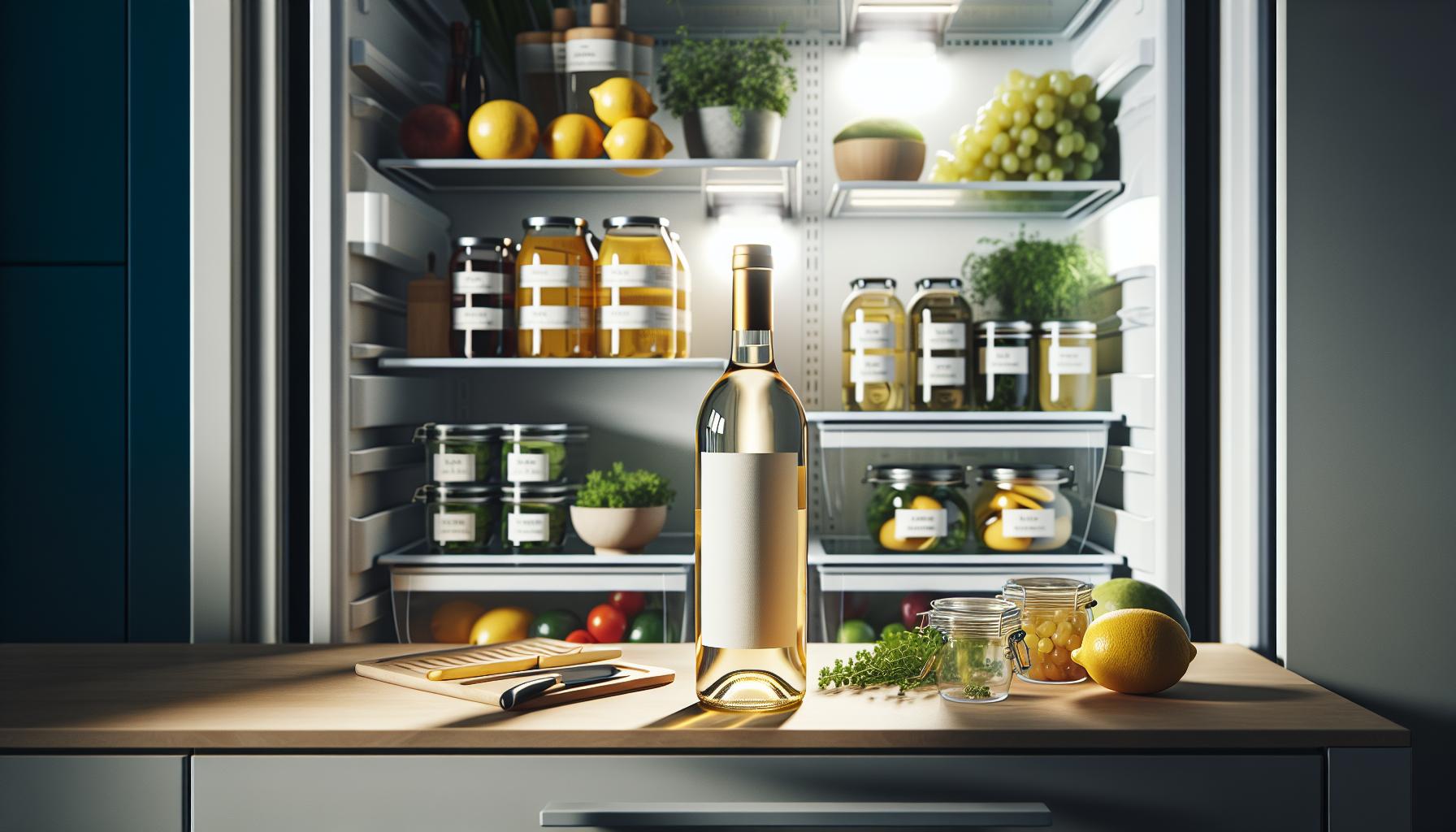
Signs Your White Wine Has Gone Bad
Determining whether your white wine has gone bad is essential for both enjoyment and safety. A bottle of wine can tell a story through its taste and aroma, but once it spoils, that narrative turns sour. A few clear signs indicate that your white wine has lost its quality and should be discarded.
One of the most noticeable signs of spoilage is a change in color. Fresh white wine typically has a bright, clear appearance. If you notice a brownish tint, this is a strong indicator that oxidation has occurred, suggesting the wine is no longer at its best. Alongside color, the smell of the wine acts as a reliable gauge; a spoiled wine may emit a vinegary or sour aroma, reminiscent of vinegar or even rotten fruit. If the scent deviates significantly from the wine’s intended fragrance, it’s best to avoid it.
Another critical aspect to check is the taste. If you take a sip and find the flavor unpleasant-sharp, overly sour, or just off-it likely means the wine has spoiled. Oxidation can alter the taste profile, making the wine taste flat or lifeless, stripping away its vibrancy. Properly stored, opened white wine should retain its quality for about two to three days in the fridge, so if it’s been longer than that, proceed with caution.
To ensure you’re not consuming spoiled wine, trust your senses. Always examine the wine’s appearance, odor, and taste before drinking. If something feels off, it’s safer to err on the side of caution and discard the bottle. Remember, enjoying white wine at its prime enhances the experience, so staying alert for these telltale signs of spoilage can save you from an unsavory sip.
Best Practices for Keeping White Wine Fresh
To maintain the freshness of white wine, it’s essential to adhere to specific storage practices that preserve its delicate flavors and aromas. The ideal temperature for keeping white wine, especially after it has been opened, is between 45 and 50°F (7 to 10°C). This not only helps slow down the oxidation process but also ensures that the wine remains within a suitable range for enjoying at serving temperatures. When you open a bottle, promptly recork it and place it upright in the refrigerator. This reduces the wine’s exposure to air, which is detrimental to its quality.
Investing in a good wine stopper is another effective way to keep your wine fresh longer. A wine stopper designed for preserving wine significantly limits the amount of oxygen that interacts with the liquid, enabling opened bottles to last an additional few days without notable loss in quality. If you’re serious about wine, consider a vacuum pump that removes air from the bottle before sealing it-this can extend freshness up to a week or more.
In addition to temperature and sealing, pay attention to the humidity level in your storage area. Aim for a humidity level between 50% and 85% to keep corks from drying out and allowing air to spoil the wine. If you store multiple bottles, try to keep them in a dark place, like a wine fridge or a closet, away from direct sunlight. Sunlight can deteriorate the wine, causing it to age prematurely and lose its character.
Finally, try to consume opened white wine within 2 to 3 days. While some varietals may hold up better than others, this timeframe generally applies to most white wines. If a few days pass, always taste a small amount before indulging further; this ensures that your experience remains enjoyable and safe. Implementing these best practices will help retain the fresh and flavorful essence of your white wine, allowing you to savor each glass to the fullest.
Factors That Affect White Wine Longevity
The longevity of white wine is influenced by a variety of factors, all of which contribute to how well it maintains its quality and flavor after opening. One key element is temperature. As mentioned earlier, white wine should ideally be stored in a temperature range between 45 and 50°F (7 to 10°C) to prolong its freshness by slowing down the oxidation process. If white wine is exposed to warmer conditions, its shelf life can diminish significantly, leading to a rapid decline in flavor.
Another crucial factor is the sealing method used after the bottle is opened. Oxygen is a wine’s worst enemy; even small amounts can start to spoil its delicate nuances. Using a quality wine stopper can help minimize air exposure, allowing the wine to last an additional couple of days. For those who are serious about preserving their bottles, consider utilizing a vacuum pump that effectively removes air before resealing. This can extend the longevity of opened wine by several days or even a week while controlling oxidation effects.
The type and body of the wine also play a significant role in how long it will last. Generally, lighter white wines, such as Sauvignon Blanc or Pinot Grigio, are most enjoyable within 2-3 days after opening. In contrast, fuller-bodied or sweeter varieties may retain their quality for a longer period due to their higher sugar content and tannins, which tend to stabilize the wine. It’s beneficial to be mindful of these variances when planning to enjoy opened white wines.
Lastly, the storage environment affects white wine’s longevity as well. Keeping it away from direct sunlight and maintaining a consistent humidity level between 50% and 85% is important. Sunlight can cause the wine to age prematurely, while humidity helps keep corks from drying out and letting air seep into the bottle. By considering these factors, wine enthusiasts can take actionable steps to ensure that their white wines remain fresh and flavorful for as long as possible.
How to Properly Seal and Store Opened Wine
To maximize the lifespan of opened white wine and maintain its delightful flavor profile, it’s essential to know how to seal and store it properly. Once a bottle has been opened, exposure to air starts a rapid oxidation process that can dull the wine’s vibrant character. Therefore, using the right sealing techniques is critical.
Begin by re-corking the bottle with the original cork if it’s still intact and not damaged. If the cork is unusable, invest in a wine stopper specifically designed to minimize air exposure. A vacuum stopper system is particularly effective; it removes excess air from the bottle, greatly slowing down oxidation. Simply place the stopper on the bottle opening, use the vacuum pump to extract the air, and then seal it-this can help preserve the wine for up to a week longer than using a regular stopper alone.
Temperature is another vital consideration for storing opened white wine. Keeping the wine in the refrigerator, ideally between 45°F and 50°F (7°C to 10°C), will help preserve its freshness. The cool and stable environment not only slows down oxidation but also helps retain flavors, making it ideal for enjoying leftovers. Additionally, keeping your wine upright can prevent the cork from becoming overly saturated, which might lead to the cork breaking down and introducing unwanted flavors into the wine.
In summary, utilizing quality stoppers, maintaining the right temperature, and keeping the wine upright can significantly enhance the longevity of opened white wine, allowing you to enjoy its full range of flavors over several days. By taking these simple yet effective steps, you can savor your wine at its best for as long as possible.
Understanding Air Exposure and Oxidation Effects
Exposing white wine to air can significantly impact its taste and overall quality. When a bottle of white wine is opened, it begins a process of oxidation, wherein oxygen interacts with the wine, leading to chemical reactions that can alter its flavors. Initially, this exposure might enhance certain aromas and tastes, allowing for a more complex profile. However, as time passes, excessive oxidation can result in dull and flat flavors, diminishing the wine’s appeal.
To minimize oxidation effects, it’s crucial to re-seal the wine promptly after pouring. Using a quality wine stopper can greatly reduce the amount of air within the bottle. Techniques such as vacuum sealing can further extend the life of your wine by removing oxygen entirely, allowing the wine to maintain its original flavor profile for a longer period. Typically, an opened bottle of white wine can last about 2 to 3 days in the fridge if properly sealed. After that period, the degradation in flavor is often noticeable, leading to a less enjoyable drinking experience.
It’s also worth noting that the rate of oxidation can vary depending on the type of white wine. Lighter wines, like Sauvignon Blanc, tend to oxidize more quickly than fuller-bodied wines, such as Chardonnay. This variance can influence how long you might want to keep the wine after opening. Thus, paying attention to the varietal can help inform your storage decisions and consumption timing. The right practices not only preserve freshness but also enhance your overall enjoyment of the wine experience.
Refrigeration vs. Counter Storage: What to Know
When it comes to storing white wine after opening, the choice between refrigeration and counter storage can significantly impact its quality and lifespan. Keeping white wine in the fridge is not just a recommendation; it’s essential for preserving the delicate flavors and aromas that define it. The cool temperatures of a refrigerator slow down the oxidation process, which begins the moment you uncork a bottle. This is especially important since many white wines, particularly lighter varietals like Sauvignon Blanc or Pinot Grigio, are more sensitive to temperature fluctuations.
Refrigeration not only extends the freshness of opened white wine to about 2 to 3 days but also helps maintain its intended characteristics. An unopened bottle of white wine can often be kept in a cool, dark place like a cellar or a pantry, as long as it’s within the ideal temperature range of 45 to 65 °F (7 to 18 °C) [1[1]. Storing it at room temperature, especially in warmer environments, accelerates oxidation and can quickly change its flavor profile, turning crisp and refreshing notes into muted and flat tastes.
It’s worth noting that some people may choose to leave their opened bottle on the counter for convenience but should be aware of the risks. If left out, the wine can degrade at a much faster rate, particularly within just a few hours. To mitigate this, ensuring that the bottle is tightly resealed can help slow down exposure to air and light, but refrigeration remains the superior choice for the best taste experience. For those who value every drop of their white wine, opting for refrigeration after opening is the best strategy to keep it tasting fresh and enjoyable longer.
The Role of Wine Varietals in Preservation
Different wine varietals have unique characteristics that influence their preservation and storage needs, making it essential to consider these factors when storing white wine. For instance, lighter white wines like Sauvignon Blanc and Pinot Grigio are typically more sensitive to temperature variations and air exposure compared to fuller-bodied varieties like Chardonnay. This impacts how long they can remain fresh once opened.
The acidity levels and sugar content in white wines play a crucial role in their longevity. High-acid wines tend to age better and are more resilient to spoilage, allowing them to retain their vibrant flavors longer, even after opening. On the other hand, sweet wines with higher sugar content may oxidize at a different pace, leading to a quicker decline in flavor. Understanding these varietal distinctions helps wine enthusiasts make informed decisions about which bottles to store together and how best to maintain their freshness.
To optimize the lifespan of opened white wine, it’s vital to adopt best practices that consider the varietal’s nature. For example, resealing a bottle with a vacuum pump can minimize air exposure, particularly for delicate varietals. Moreover, maintaining a consistent refrigeration temperature plays a key role. Typically, all white wines should be stored in the fridge after opening, regardless of their type, as cooler temperatures slow down the oxidation process, allowing these wines to stay fresher for up to three days.
Ultimately, recognizing the role that wine varietals play in preservation empowers consumers to tailor their storage practices for maximum flavor retention. By taking the time to understand these nuances, you can ensure that each glass of white wine remains as delightful as the first-whether it’s a lively Sauvignon Blanc or a rich, oaky Chardonnay.
Tips for Enjoying Leftover White Wine
Leftover white wine can still be an enjoyable treat, provided you know how to store and use it. After opening a bottle, most white wines can remain fresh in the fridge for up to three days. However, to truly savor those delightful flavors, implementing best practices for storage is essential. Start by resealing the bottle with a cork or a specialized wine stopper designed to minimize oxygen exposure. For even more protection, consider using a vacuum pump to remove excess air from the bottle, which can slow down oxidation and keep your wine tasting vibrant for a little longer.
When it comes to enjoying your leftover white wine, think creatively. Whether you’re hosting a dinner party or just enjoying a quiet evening at home, here are a few tips to make the most of that wine:
- Use in Cooking: Leftover white wine can enhance various dishes. Consider using it in sauces, risottos, or marinades to elevate flavors. A splash of white wine can add acidity and complexity to seafood dishes, chicken, or creamy pasta.
- Create Wine Spritzers: Mix your leftover white wine with club soda and a splash of fruit juice or fresh fruit for a refreshing spritzer-a perfect summer drink!
- Make Wine Ice Cubes: Pour leftover wine into ice cube trays and freeze. These cubes can be used later as quick flavor enhancements in soups, sauces, or sangrias.
Always inspect the wine before consuming it, even after just a few days in the fridge. Look for any signs of spoilage, such as off smells or changes in appearance, which might indicate it’s no longer good to drink. If the wine smells sour or has an unusual color, it’s best to err on the side of caution and discard it. By treating your leftover white wine with care, you can savor its deliciousness several days after opening.
Frequently Asked Questions About White Wine Storage
While storing white wine, many enthusiasts find themselves with numerous questions about how to best preserve its flavor and integrity. Here’s a compilation of frequently asked questions that will help clarify common concerns regarding white wine storage.
One of the most common questions is, How long can I keep opened white wine in the fridge? Generally, opened bottles of white wine remain fresh in the refrigerator for about 3 to 5 days. It’s crucial to reseal the bottle tightly, preferably with a cork or a specialized wine stopper that minimizes air exposure, to extend its freshness. For even better preservation, consider using a vacuum pump to remove excess air before sealing, as this can significantly reduce the oxidation process which negatively affects the wine’s flavor.
Another frequent inquiry pertains to the effects of temperature on white wine longevity. Ideally, white wine should be stored in a cool environment, between 45°F and 50°F (7°C and 10°C), which is also conducive for serving temperatures. Keeping it outside of this range, particularly in warmer conditions, can accelerate deterioration and spoilage. In terms of storage location, a refrigerator is often the best choice for already opened wine, while a dedicated wine fridge offers optimal conditions for both opened and unopened bottles.
Many wine drinkers wonder, How can I tell if my white wine has gone bad? Signs of spoilage include a sour smell, a change in color (e.g., browning), and an unpleasant taste. If the wine smells off or exhibits unusual characteristics, it’s safest to discard it. Additionally, even subtle changes in aroma can indicate that the wine has oxidized and is no longer enjoyable.
Finally, readers frequently ask about best practices to maintain the flavor of their white wine. Regular checks for freshness are essential even within a few days after opening. Notably, storing wine upright in the fridge minimizes cork exposure to liquid, which can help prevent spoilage. Utilizing dark storage spaces avoids UV light interference, essential for longer-term preservation. With these insights, you can confidently store your white wine to enjoy its delightful flavors for as long as possible.
Q&A
Q: How long can I keep an opened bottle of white wine in the fridge?
A: An opened bottle of white wine can last in the fridge for about 3 to 5 days. To maximize freshness, ensure it’s sealed properly with a cork or a vacuum pump to reduce air exposure.
Q: Does the type of white wine affect how long it lasts in the fridge?
A: Yes, different white wines may have varying shelf lives. Generally, lighter wines like Pinot Grigio are best consumed within a few days, while fuller-bodied wines like Chardonnay can last slightly longer if stored correctly.
Q: Can I drink white wine after it’s been open for a week?
A: While it’s technically safe to drink white wine that’s been opened for a week, the taste and aroma may degrade significantly. It’s best to consume it within 3 to 5 days for optimal flavor.
Q: What is the best way to store leftover white wine in the fridge?
A: To store leftover white wine, keep it in the fridge with a stopper or in a bottle with less air. Avoid leaving it wide open to minimize oxidation, which can spoil its flavor.
Q: At what temperature should white wine be stored in the fridge?
A: White wine is best stored in the fridge at temperatures between 45°F and 55°F (7°C to 13°C). This range helps preserve its delicate flavors and acidity.
Q: How can I tell if white wine has gone bad?
A: Signs that white wine has gone bad include an off or sour smell, a flat taste, and browning of the liquid. If it smells like vinegar or has a sharp aroma, it’s best to discard it.
Q: Is it safe to drink white wine that has been stored for more than a week?
A: While it may not be harmful to consume older white wine, its quality will likely have deteriorated significantly. For the best experience, consume opened wine within 3 to 5 days.
Q: Should I refrigerate white wine if it’s unopened?
A: It’s not necessary to refrigerate unopened white wine, but doing so can help maintain its freshness. Store unopened bottles in a cool, dark place, ideally at a consistent temperature.
Key Takeaways
To keep your white wine fresh and flavorful, remember to consume it within a few days of opening and store it properly in the fridge. By following these simple guidelines, you can enjoy your wine at its best! If you’re wondering how to maximize your wine experience, be sure to check out our related articles on wine storage techniques and the best glasses for different wine types.
Don’t miss the chance to elevate your wine knowledge-sign up for our newsletter for more tips and tricks on wine preservation and selection. Share your experiences with wine storage in the comments below, and help others make informed choices! Remember, a little attention can go a long way in savoring your favorite wines. Cheers to making every sip count!

